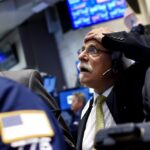Tracking the battles for environmental justice: here are the world’s top 10
Author Julie Snorek Post-Doctoral Researcher, Environmental Justice Atlas, Autonomous University of Barcelona In Delhi, middle class residents and informal recyclers joined together to oppose the privatisation of waste management. EPA Environmental justice activism is to this age what the workers’ movement was for the industrial age – one of the most influential social movements of its time. Yet, despite its consistent progress since the 1970s, environmental justice protests seem to get lost in the morass of information on broader environmental issues. In contrast, labour conflicts, including strikes and lock-outs, carry such gravity that the International Labour Organisation tracks these on a systematic basis. As more communities are refusing to allow the destruction and contamination of their land, water, soil and air, these, in turn, deserve to be counted. The Environmental Justice Atlas (EJAtlas), an inventory of social conflicts around environmental issues, fills that gap. It is funded by two successive European research projects, through a collective effort of scientists and activists. It records the failures and successes of the worldwide movement for environmental justice. The project is directed and coordinated by Leah Temper, Daniela Del Bene and Joan Martínez-Alier at the Institute of Environmental Science and Technology at the Autonomous University of Barcelona. It has collected and categorised about 2500 ecological distribution conflicts. These focus on who gains and who loses in development processes, arguing that these movements play a fundamental role in redefining and promoting sustainability. In honour of World Environment Day, on June 5th, some of the highlights of the most pertinent findings, stemming from the ten most critical categories of environmental distribution conflicts facing the world today are shown. These are listed in order of most-catalogued cases in the EJAtlas. But due to the nature of the project, this is not indicative of its global significance. The top ten environmental conflicts Land grabbing […]








